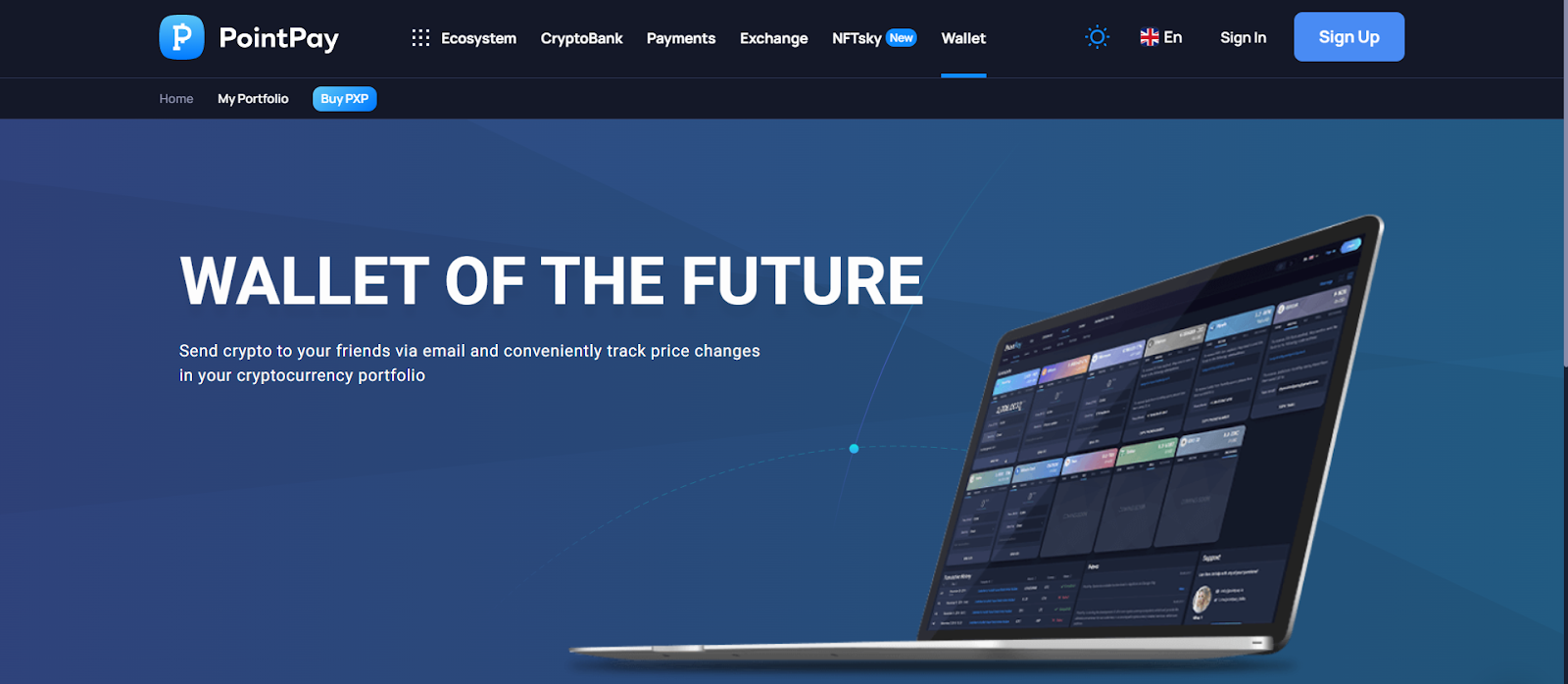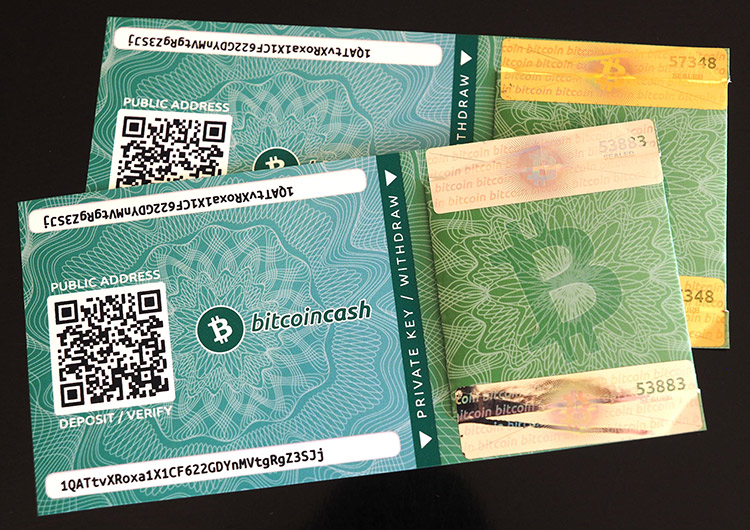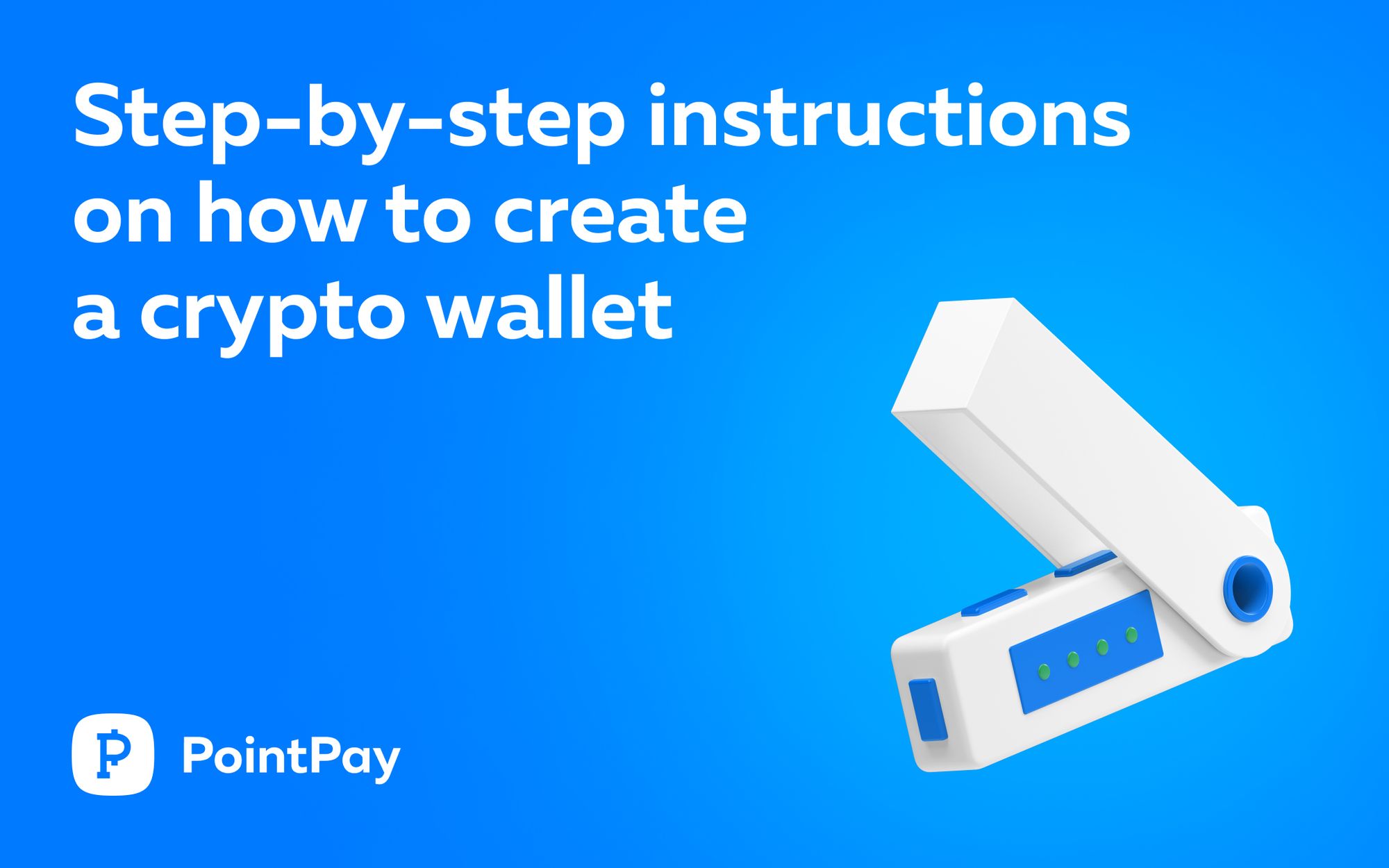You already know that cryptocurrency is not stored on a wallet but on the blockchain. So a crypto wallet simply provides you access to your cryptocurrency. Analogy: there is no money on your plastic bank card either; it only opens access to a bank account. We have described the basics of crypto wallets in this article. Now we’d like to show you how to set up your own crypto wallet.
How does a crypto wallet work?
A crypto wallet has two parts: a public key and a private key. A key is a long sequence of characters.
Your public key is the identifier of your wallet; in other words, it’s a wallet address in the blockchain. The public key is publicly available and transmitted when you want to ask someone to send you cryptocurrency.
The private key is required to complete transactions; in other words, it’s the password you enter to confirm your actions.
If you create a non-custodial crypto wallet, you will have to store a seed phrase — a sequence of random 12–24 words that will help you recover your private key is lost. If you forget both your private key and seed phrase, you will not be able to access your funds.
Now let’s look at different wallets and how to choose the best one for you.
What types of crypto wallets exist?
Two types of crypto wallets exist: hot and cold.
- Hot wallets are internet-connected, so they can only be used online. For example, you can use a hot wallet application on your phone or laptop.
- Cold wallets are offline and not connected to the internet. Cold wallets have a physical form, such as paper and hardware wallets.
Each type of wallet has its strengths and weaknesses. Let’s look at how to choose the right one for you.
How to create a hardware wallet?
This is a cold wallet. It looks like a flash drive that can be plugged into your computer’s USB port and used to send cryptocurrency. Some wallets have additional security features, such as passphrases or fingerprint readers. Others can connect via Bluetooth, allowing you to send transactions from your phone if your computer isn’t nearby.

Source: Blockchain Center. Ledger hardware wallet
When should you buy a hardware wallet?
A hardware wallet is a good choice for people who want to keep their cryptocurrency safe but don’t make regular trades.
Hardware Wallet Pros:
- No internet connection — difficult for hackers to hack and steal money;
- No need to rely on online services — only you have access to your money.
Hardware Wallet Cons:
- It’s easy to lose a physical device;
- In case of loss, you will not be able to recover funds.
There are two popular brands of hardware cryptocurrency wallets, including Ledger and Trezor. The following instructions are written using the Trezor device as an example:
- Purchase a device and download the application for your operating system from the official website.
- Launch the application and connect your device to the computer via a cable to set up your device.
- Once you click the Setup button in the application, the app will ask you to update your device’s firmware.
- Select the Standard Seed Backup option to create a wallet. To do this, click Create backup in the application and make sure to check each item of the instruction.
- After confirming the operation on your device, you will see the backup phrase consisting of 12 random words. You should write them down in the same order and store them in a safe place. You might need them later to restore access to your wallet.
- You will be tested three times on the knowledge of these 12 words. After verification, click Confirm on the device.
- If you’re setting up a PIN on your device, select Continue in the application on your PC, then select a Set PIN. Enter your PIN on the device itself, then click Continue.
- To create a new wallet, select the necessary cryptocurrencies in the menu that opens on your computer, then click Complete setup.
- Name your device, then click Access suite and select Standard wallet. Now you can access your wallet by using the application or web browser on the device every time you connect to it.
How to create a software wallet?
A software crypto wallet is just an app on a mobile device: a smartphone, tablet, or laptop (or several at once). It’s convenient to have it with you wherever you go.
When should you buy a software wallet?
Good for keeping small amounts that you are going to spend. For example, you are constantly working with freelancers who accept payments in crypto, or you are engaged in day trading.
Software Wallet Pros:
- Easy to transfer funds or check your balance;
- Familiar to customers that have used online banking.
Software Wallet Conse:
- If your device is stolen, you will lose all the coins in the wallet;
- If you don’t make backups of your seed phrase of a private key, you will lose access to your funds;
- It’s less secure than hardware.
Among the popular software, wallets are Bitcoin Wallet, Electrum Wallet, and PointPay Wallet.

A common type of online wallet is a custodial wallet. Custodial wallets store your public and private keys on their servers, allowing you to access your cryptocurrency by logging in. Such services often offer additional financial instruments, like investing, trading, loans, etc.
When should you use a custodial software wallet?
Custodial software wallets are popular among traders, miners, and everyone who often sells and buys cryptocurrency. In general, you should choose custody services when you:
1. Frequently buy and sell assets
If you often sell and buy cryptocurrencies, it makes sense to store funds where you can catch a price jump and make a deal on time.
2. Receive interest on your funds
Such platforms allow you to earn interest on your funds. If you are not comfortable with money lying around, it is worth investing in such a platform.
3. Access additional services
For example, the Pointpay wallet gives you access to various additional products. By creating a crypto wallet in our ecosystem, you get the opportunity to trade on the exchange, take out crypto loans, receive interest on your assets, and more!
4. Restore access to funds even if you forgot your seed phrase
Custodial services require you to undergo a Know Your Customer (KYC) procedure, during which you upload your passport data. That’s why you will be able to restore access to your account even if you lose your keys
Custodial Wallet Pros:
- Ideal for trading or investing;
- You can earn APY on your assets;
- You can regain access to your account.
Custodial Wallet Cons:
- Risk of a hacker attack;
- You need to go through KYC — that is, deanonymize;
- There are commissions for using the service.
Choose the most suitable desktop or mobile wallet and install it on your computer/smartphone. Let’s take the PointPay service as an example, but the algorithm for similar services is approximately the same:
- Some custodial services involve downloading a desktop or mobile application. The PointPay wallet is available both in the web and mobile versions.
- After downloading the application, you need to create a PointPay account by entering your email and password.
- Protect your wallet with additional security measures such as Face ID and 2FA.
- After creating an account and setting up security, you need to top up your account. For example, you can receive a transfer from another user or buy cryptocurrency through one of the PointPay payment partners. Now you can trade on the PointPay exchange or use any of the services available in our ecosystem.
How to create a paper wallet?
A paper crypto wallet is a printed piece of paper with your public and private keys and a seed phrase. To generate a paper wallet, you need a generator program that creates a piece of paper with a QR code. Then you need to print the received piece of paper and put it in the safe.

Paper Wallet Pros:
- Disconnected from the Internet;
- Password is not stored online.
Paper Wallet Conse:
- It’s inconvenient to transfer your funds;
- A piece of paper can be easily destroyed or stolen.
The most popular paper wallet generator is Bitaddress.org. To create a paper wallet, follow the steps below:
- Create a free paper wallet at websites such as bitaddress.org.
- Move your cursor around the screen or type some characters to generate a random bitcoin address.
- Click the Paper wallet item, specify the number of wallets you need, and click Generate.
- Print the keys and QR codes you received.
- To top up your wallet, transfer your public key to another user.
- Install one of the hot wallets to withdraw funds and use your private key generated in step 3.
Final thoughts
Before you choose a wallet, think about your goals. For long-term investments, a hardware wallet is the most secure option. For short-term trading, hot online wallets are preferable. If you have many different cryptocurrencies, we recommend using a multicurrency crypto wallet. If you want to access various cryptocurrency products, create a wallet in an ecosystem such as Pointpay, where one account gives access to a broad range of products.
